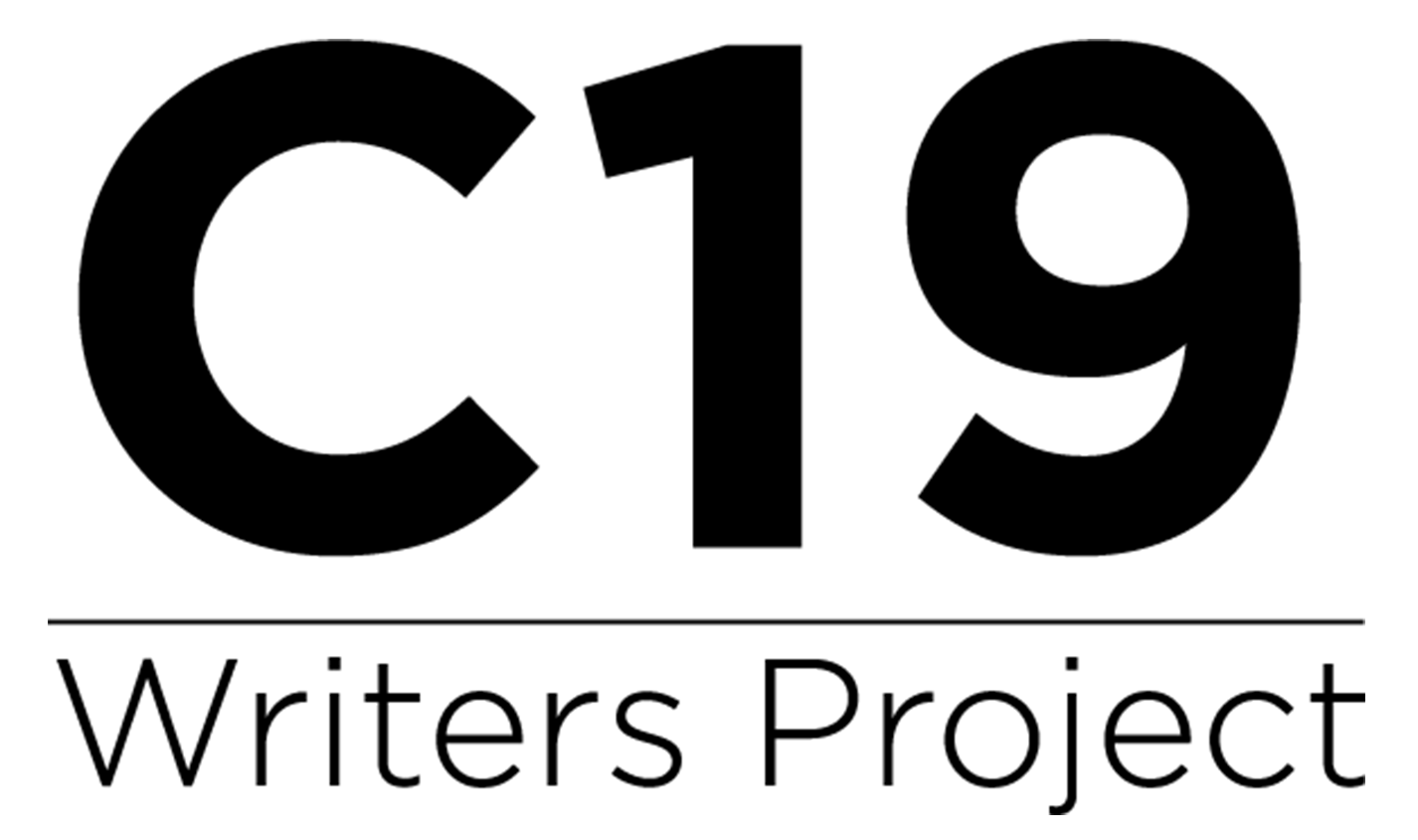Warm-Up: Students explore what they already know about the coronavirus pandemic, share how they are being affected, and discuss how their communities are navigating the pandemic.
Introducing the Resources: Students explore the background of The COVID-19 Writers Project (C19WP) and preview the two components of the project covered in this lesson: Devastation and Awakening.
Instructions - Exploring the Resources: Students explore the stories of participants in the Devastation and Awakening video narratives.
Discussion Questions: Students reflect on their analysis of the resources and connect with the reporting.
Extension Activities: Students apply what they have learned to plan how to record individual stories of their own.
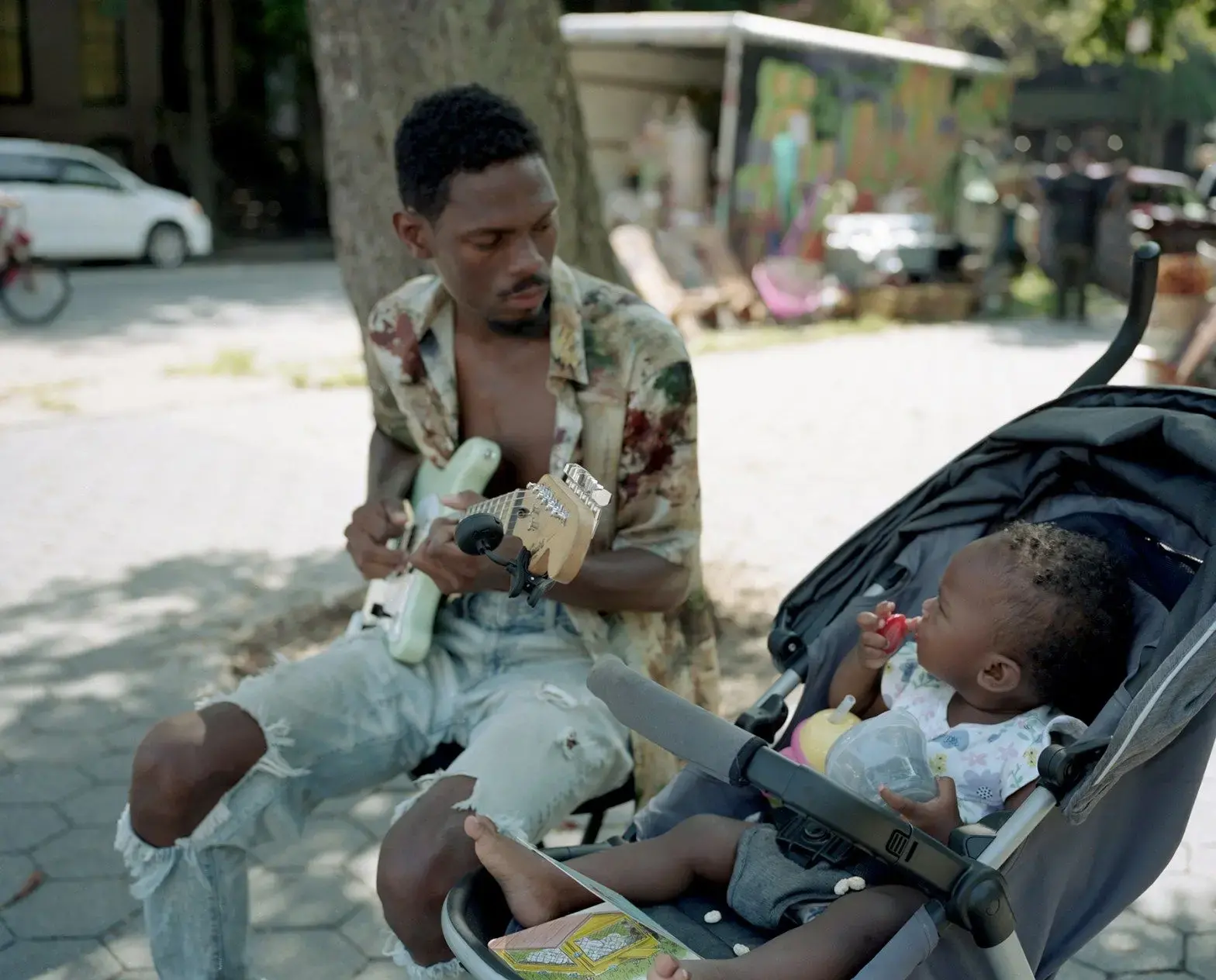
To understand the nuance of how people navigate moments in history, it is important to capture multiple voices through different methods of reporting. This lesson will explore the art of telling individual stories through different mediums while engaging with the reporting from The COVID-19 Writers Project (C19WP).
Through video, essays, and photography, C19WP explores the coronavirus pandemic through the lives of individuals, examining a cross-section of experiences and answering the question: What is the crisis telling us about who we are as a society today?
Objectives:
Students will be able to…
- Compare and contrast the experiences of the people interviewed in The COVID-19 Writers Project
- Understand how major crises can illuminate other under-reported issues in a community
- Analyze how first-person narratives inform our understanding of historical events
- Assess the value of first-person narratives in documenting history
- Develop a resource that captures the impact of the coronavirus pandemic in their own lives and communities
Warm-Up:
- Think-Pair-Share
- Think:
- What do you know about the COVID-19 pandemic?
- In your opinion, how are your community and country navigating the coronavirus pandemic?
- How are you dealing with the pandemic?
- When else has the country faced a challenge similar to this?
- Pair:
- Find a partner or small group and take out a sheet of paper.
- Share:
- With your partner or small group, share your answers to questions 1-4. As you share with one another, write your responses down on the sheet of paper.
- Think:
- Brainstorm Again
- Take a look at your group's answers. Does the pandemic look differently for each of you? Does hearing from someone else change your understanding of the pandemic's impact? Why is it important to hear from multiple perspectives?
Introducing the Resources:
In this lesson, we will explore how journalists chronicle major crises in history by documenting individual stories from people with different experiences and perspectives. To do this, we will explore several pieces of reporting from The Covid-19 Writers Project (C19WP). C19WP was inspired by President Franklin D. Roosevelt's Federal Writers Project (FWP) of the 1930s that produced audio and written recordings of formerly enslaved Americans. Like the FWP, C19WP presents first-person multimedia narratives that reflect how society is grappling with the coronavirus pandemic.
The following reporting resources from C19WP explore the coronavirus pandemic through the stories of people in Brooklyn, New York City. We will be examining two phases of the reporting:
- Devastation examines New York City as the epicenter of the pandemic in the spring of 2020.
- Awakening covers the protests in New York City for social and racial justice, largely in response to the murder of George Floyd, as the year and pandemic continued.
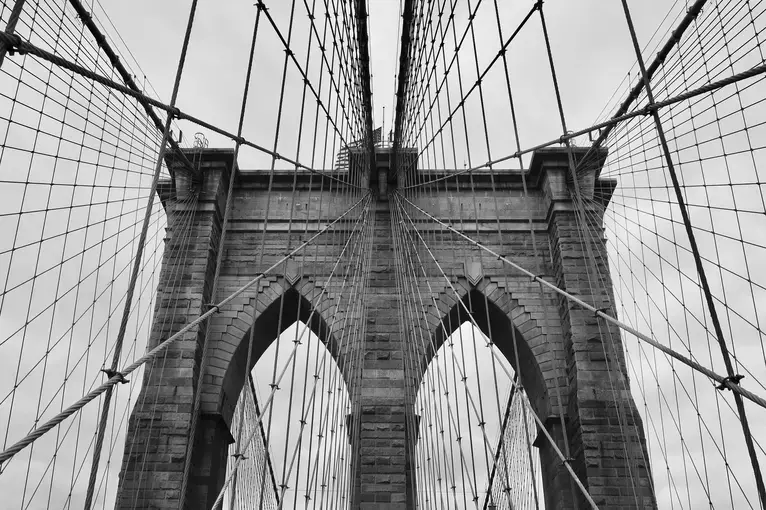
The Brooklyn Bridge. Image by Yue Yin Leong. United States, undated.
Instructions - Exploring the Resources:
- Analyze Individual Stories - Devastation
- Watch the first two minutes of each of the three "Devastation" videos. Be sure to read/listen to the introduction, and pay attention to the COVID-19 Timeline. According to the timeline, when is the devastation period?
- On your own, explore the stories of 2-3 participants in each video.
- Tip: Click here to see a list and description of participants in the videos.
- Tip: The videos are more than twenty minutes long. Play around and click at different timestamps to identify participants you'd like to hear from.
- For each video, answer the following questions. Use this graphic organizer to record your answers. Remember, you should explore the stories from at least 2-3 speakers from each video:
- Who is being interviewed? What is their occupation? What do they say?
- Among the people you identified, where are there similarities in how these people are impacted by the pandemic? Where are there differences?
- Analyze Individual Stories - Awakening
- Watch the first two minutes of the "Awakening" video. Again, pay attention to the COVID-19 Timeline. According to the timeline, when is the awakening period? If you have time, try to watch the first eleven minutes (or more).
- Explore the stories of 2-3 participants in the video and answer the following questions, using the "Awakening" section in the graphic organizer:
- Who is being interviewed? What is their occupation?
- How are the participants dealing with the Awakening period? What stories are they sharing?
- What do the lives of people in their community look like?
- Among the people you identified, what are the similarities? What are the differences?
- You may run into people whose stories you already explored in the "Devastation" videos. Has anything changed for them since then? If so, what?
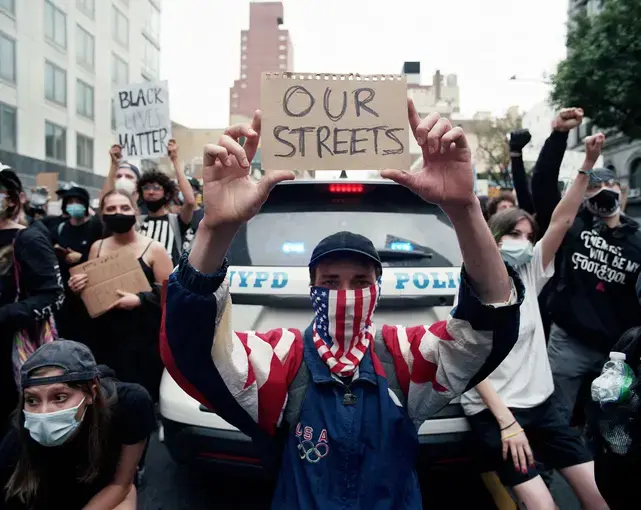
"Whose Streets? Our Streets!" Image by Mateo Ruiz González. United States, 2020.
Discussion Questions:
Part 1: "Devastation"
- What can we learn from individual stories about what is happening in the pandemic for people?
- Based on the stories you explored, why are some people affected differently by the virus than others?
- How do individual stories help contextualize someone's experience of the pandemic or other crises (past experiences, upbringing, etc.)?
Part 2: "Awakening"
Often, research and reporting that highlights the impact of major crises on the lives of individuals can illuminate other under-reported issues that surface during a crisis.
- What themes did you notice in the "Awakening" video?
- According to the individuals interviewed in the video, what other under-reported issues are surfacing during the pandemic? How, and why?
Part 3: Connecting to the Reporting
- What did you like about this type of reporting? Do you think hearing from people in their own words and voices was useful? Why or why not?
- Where are there similarities between individuals' experiences and where are there differences?
- How do you personally connect to the stories of these individuals?
- By exploring individual stories…
- What new information did you learn about the causes and impacts of the pandemic?
- What new information did you learn about other under-reported issues in communities navigating the pandemic?
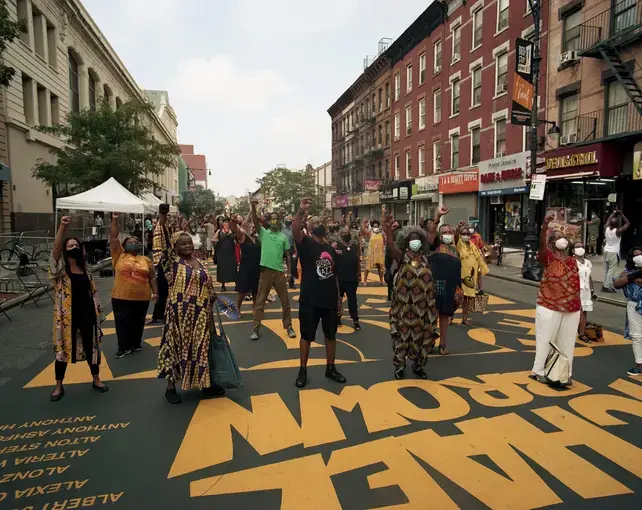
"A great Day In Bedstuy." Image by Mateo Ruiz González. United States, 2020.
Extension Activities:
- Option 1: Plan and record a diary/journal that documents your individual experience of the pandemic.
The following ideas are suggestions. Feel free to use these, but you are not limited. Be creative!- What do you want to remember about the pandemic? Compose a story to send to your future self. Capture how you're feeling, what your community looks like, and what your predictions are of the pandemic's lasting impact.
- Focus on your daily schedule. What looks different? Maybe you want to do a "before and after" to highlight what life looked like before the pandemic, and what life looks like now.
- Option 2: Interview people in your community (friends/family/other) about the pandemic or other major moments in their lives.
We suggest interviewing more than one person. As you complete your interviews, include:- Is anyone making connections between the pandemic and another major moment?
- What are the differences in experiences between the people you're interviewing?
- How are they being impacted?
- Who are you interviewing? What is their occupation?
- Option 3: Plan an interview series for an under-represented moment in history.
- When else has the United States, the world, and/or your individual community faced a major crisis? Make a list of these moments.
- Pick one moment, and imagine all of the people who may have been affected differently by this crisis. Using C19WP as inspiration, make a list of people who you could interview about that moment in history.
- Next, plan the questions you would ask to help the people on your list explain their experiences with this crisis.
- Tips:
- For all options, you may choose to document your experience through video, images, audio, plain text, or a combination. You might also find it helpful to structure your experience in a timeline format, similar to C19WP.
- For tips on planning interviews, click here.
CCSS.ELA-LITERACY.RI.8.7
Evaluate the advantages and disadvantages of using different mediums (e.g., print or digital text, video, multimedia) to present a particular topic or idea.
CCSS.ELA-LITERACY.RI.9-10.7
Analyze various accounts of a subject told in different mediums (e.g., a person's life story in both print and multimedia), determining which details are emphasized in each account.


